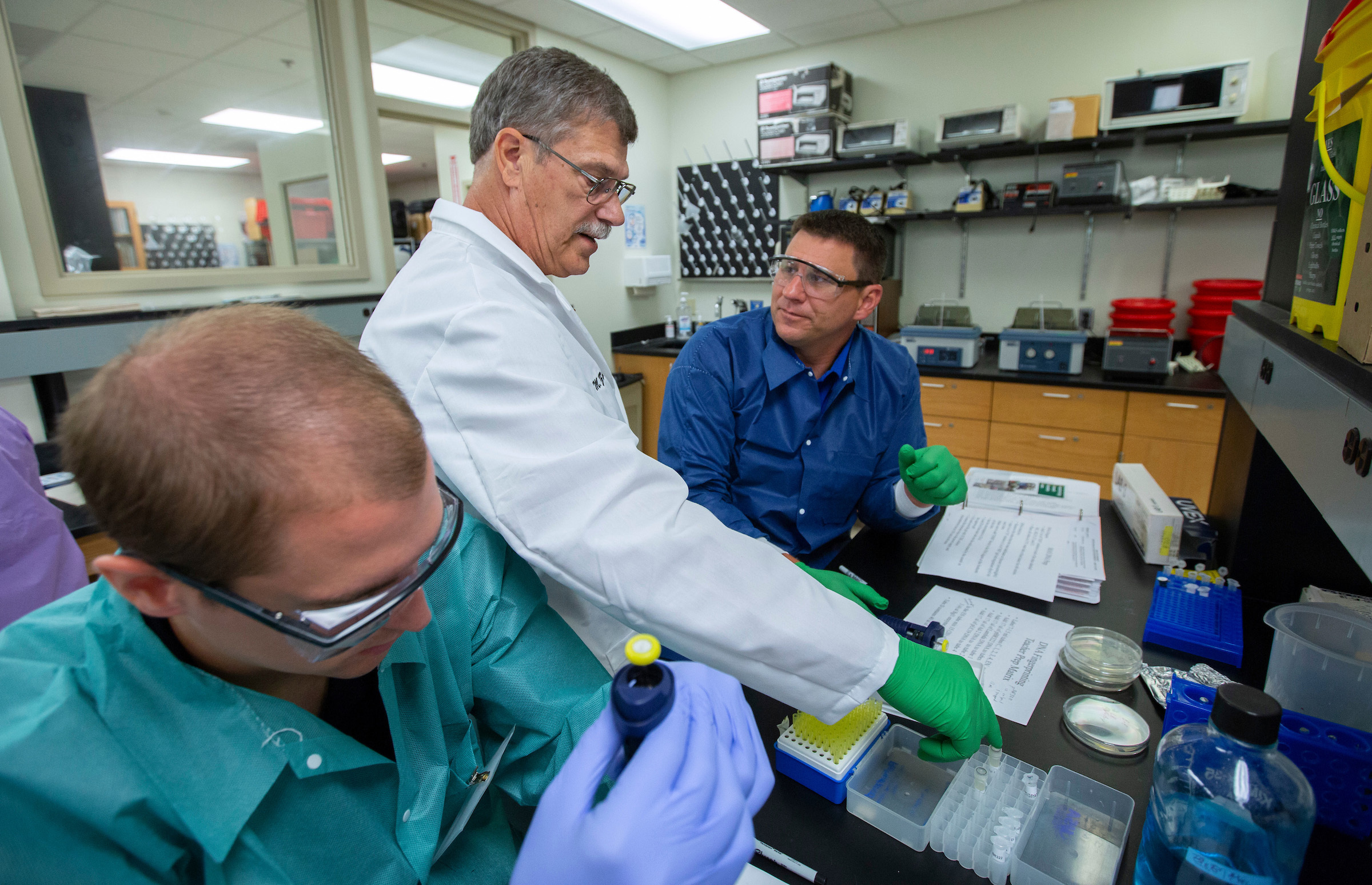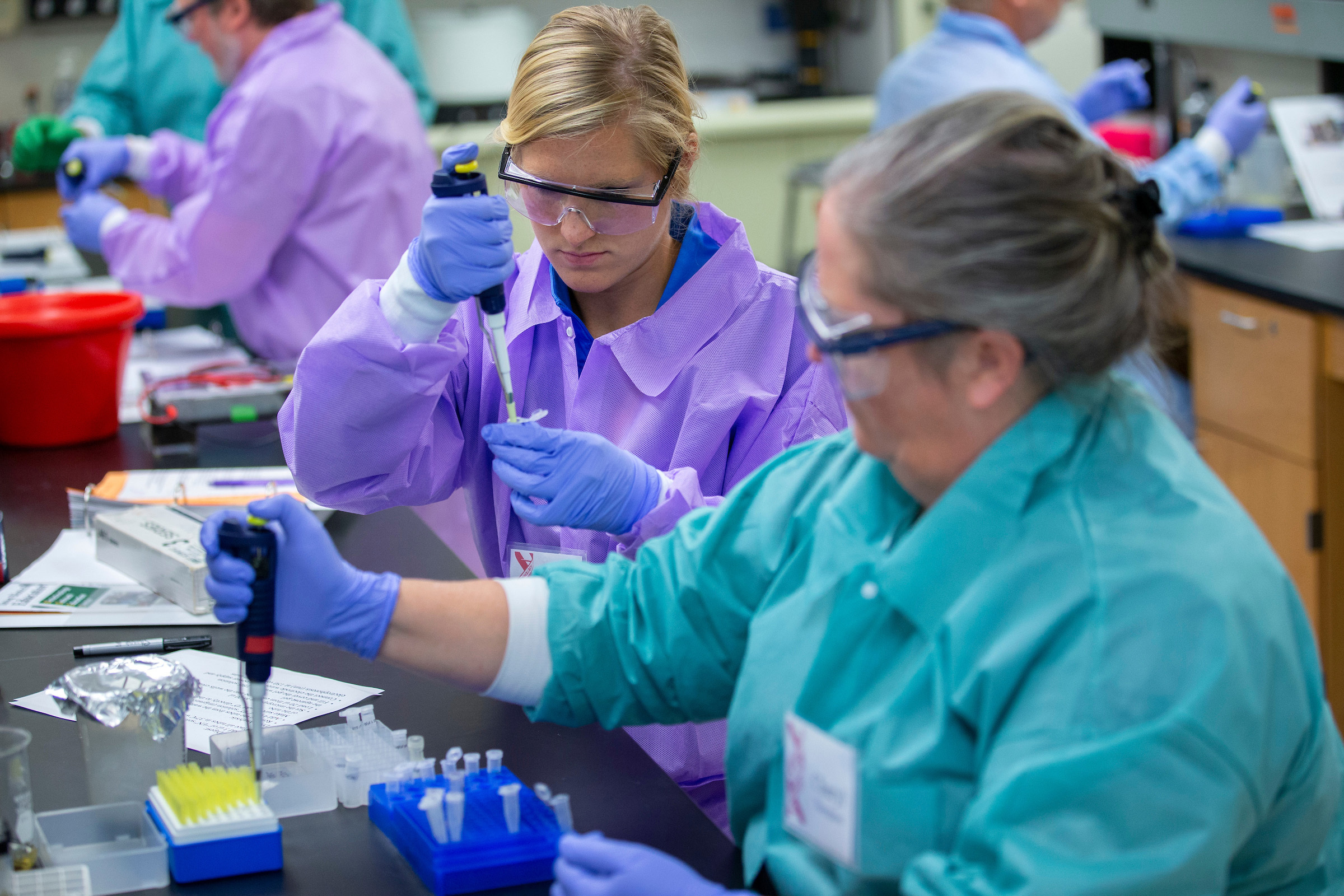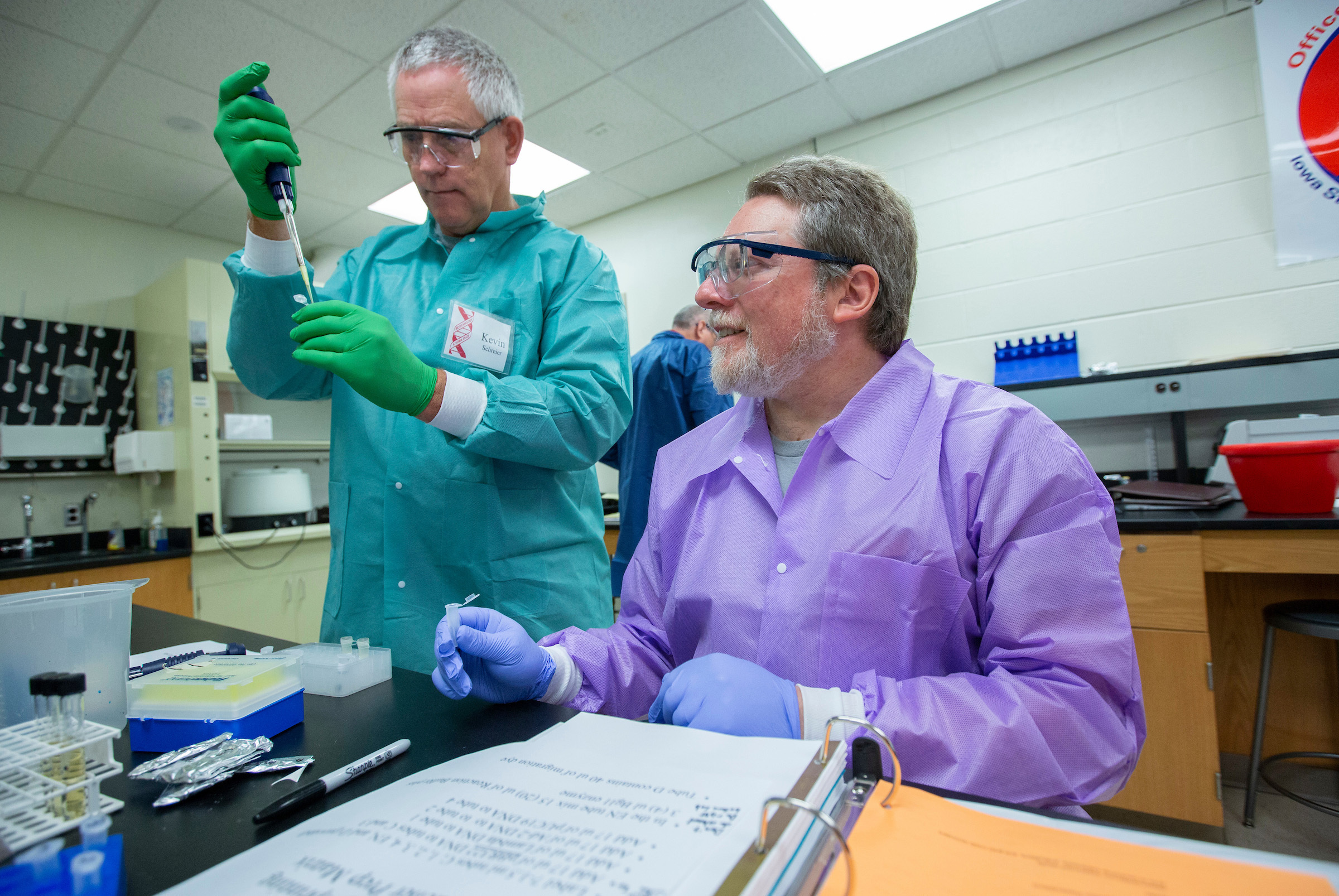
Mike Zeller, center, instructs teachers Brant Clausen of Pleasant Valley High School, Bettendorf (right), and Byron Butler, Iowa City West High, during a DNA fingerprinting analysis at one of Iowa State's biotechnology education workshops. Photo by Christopher Gannon.
AMES, Iowa – Mike Zeller is on a mission to promote life science.
It’s been his passion for the past 45 years -- first as a high school science teacher, and since 2000, as program coordinator for the Biotechnology Outreach Education Center, part of Iowa State’s Office of Biotechnology.
The center’s mission might be best described as hands-on, live science.
Zeller and colleagues invite K-14 educators to four-day campus workshops each June to train in the scientific principles and techniques needed to boost biotech in their classrooms. The workshops are funded by the Office of Biotechnology and the Iowa Biotechnology Association.
Teachers explore the structure and function of DNA, learn about antibiotic resistance, work with non-pathogenic E. coli bacteria and study the spread of disease. They investigate the science behind biofuels. They use biotechnology techniques to make cheese and a soy drink. They even examine and create case studies relating to ethical issues in science education.
Investing in students
Over three decades, the center has helped train more than 3,200 Iowa educators in science, family and consumer sciences, agriculture and extension. That training reaps dividends far beyond the professional development or graduate credit each teacher can earn. The life science educators learn how to introduce new lab activities to their students. And they can receive free supplies and/or borrow equipment to carry out those experiments year after year.
This fall marks BOEC’s 25th consecutive school year of providing biotech equipment and supplies to the state’s educators. During that time, 320,000 Iowa students have benefited.
“There are other programs out there, but ours is probably the longest and most extensive in the U.S.,” Zeller said.
Filling a need
The cost of lab supplies adds up quickly, Zeller said – especially for smaller or rural school districts.
“Perishables (such as DNA) are very expensive for the schools,” he added. “We save by buying in bulk, and send out what they need at no charge. A precision pipettor can run $200 apiece. We provide those, too.”
A PCR (polymerase chain reaction) kit with a thermal cycler and mini-microcentrifuge – used to amplify segments of DNA – is one example of lab equipment available for loan. Teachers trained to use it in the advanced biotech workshops can later bring their students to Iowa State for an exercise, or Zeller will take the equipment to them. Eleven educators borrowed it this year – a number Zeller predicts will grow.
“Not many schools can afford to invest in a $4,000 machine they use once a year,” he said.
Zeller travels the state working with students – sharing hands-on experiences in molecular biology, chemistry and genetics. Sometimes the students make field trips to the center’s twin teaching laboratories in ISU’s Molecular Biology Building. And there are the 15 or so Advanced Placement biology classes that come to campus every year to learn more about biotech.
The need for resources has remained a constant over the course of the biotech outreach program. One thing that has changed? Everybody seems to be getting smarter about molecular biology, Zeller said. The level of instruction has increased.
“The kids know more when they get here. The teachers know more,” he said. “People’s experience and knowledge has increased.”
The importance of STEM
From its formation in 1984, ISU’s Office of Biotechnology recognized the importance of outreach. Zeller credits Distinguished Professor Emeritus Walter Fehr – the office’s director for its first 25 years – as instrumental in bringing science education to the public, forming relationships with industry and Iowa’s Area Education Agencies. Following Fehr’s retirement, the program continued under James Reecy, now associate vice president for research; and current director Jeanne Serb, associate professor of ecology, evolution and organismal biology.
STEM education and biotech research became critically important as Iowa emerged from the farm crisis. They still are, Zeller said.
“Iowa is a biomass state. We grow stuff,” he said. “We’re not only providing opportunities for educators to look at the science that feeds the world, but also to get their students ready for jobs here in Iowa. You have to be able to do the biosciences to get to the next stage of economic development. This is a big one for us – preparing the next generation.”

Educator Mandi Hare, center, of Central Lyon Middle School, Rock Rapids, works with others in the molecular biology lab. Photo by Christopher Gannon.

Teachers Kevin Schreier, left, of Southeast Valley Schools, Burnside; and Ronald Schuck, Ames High School, prepare samples in the first of three biotechnology workshops held on the Iowa State campus in June.